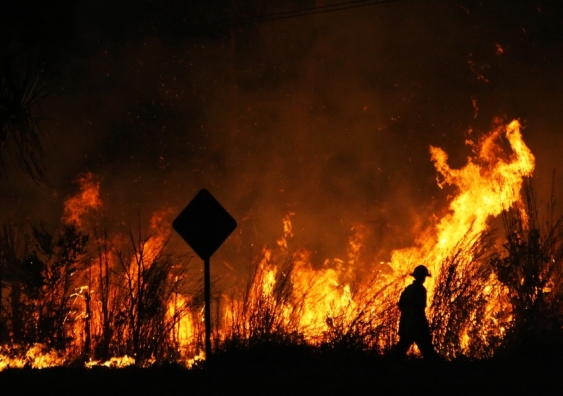Navigating the Demands: Your Overview to Acquiring a BAL Report
Navigating the Demands: Your Overview to Acquiring a BAL Report
Blog Article
Essential Tips for Bushfire Monitoring to Guarantee Fire Protection
Recognizing Bushfire Threat Levels
Recognizing the varying degrees of bushfire threat is crucial for reliable preparation and prep work in mitigating possible dangers to lives and residential or commercial properties. Bushfire danger levels are typically classified based upon variables such as climate conditions, gas accessibility, topography, and historical fire actions. By comprehending these threat people, communities and degrees can proactively implement approaches to reduce susceptability and enhance durability despite prospective bushfire occasions.
The very first degree of bushfire risk is low threat, where the possibility of a bushfire taking place and creating significant injury is very little. This level commonly occurs throughout periods of low temperature levels, modest moisture, and marginal wind rates. Moderate risk levels suggest a boosted possibility for bushfires as a result of intensifying weather or gas schedule. High-risk levels represent a considerable risk, with problems helpful to quick fire spread and severe fire habits. Severe threat degrees are one of the most critical, posing impending risk to lives and residential or commercial properties because of severe weather and extremely combustible fuels.
Recognizing these bushfire risk levels enables stakeholders to customize their preparedness and reaction activities as necessary, guaranteeing a proactive and efficient approach to bushfire monitoring.
Establishing a Defensible Room
Reliable bushfire administration begins with developing a defensible room around buildings to improve protection against prospective fire dangers. A defensible space is a barrier zone that develops a barrier in between a structure and the bordering flammable greenery. This space works as an essential line of defense, providing firemens a secure area to operate and assisting to decrease the threat of a fire spreading to the property.
When establishing a defensible area, it is necessary to consider the design of the building and the surrounding landscape. Clearing up greenery, specifically highly combustible plants, within a certain span of the property can help stop the quick spread of fires. Furthermore, keeping a well-irrigated area around the residential or commercial property can additionally enhance its defensibility.
Routine maintenance of the defensible area is important to ensure its effectiveness. This consists of cutting overhanging branches, clearing dead plant life, and maintaining the area totally free of particles. By investing time and effort into establishing and preserving a defensible area, homeowner can significantly improve their chances of protecting their homes and possessions during a bushfire.
Executing Fire-Resistant Landscaping
When creating landscapes to alleviate the risk of bushfires, integrating fire-resistant components is crucial for boosting residential or commercial property defense and minimizing fire risks. Select plants with high wetness web content, low oil content, and very little dead plants to decrease the threat of fire spread.

Producing an Emergency Emptying Strategy
Developing a thorough emergency discharge plan is essential for ensuring the safety and security and wellness of people throughout potential bushfire occurrences (Bushfire Risk). An effective emptying strategy should lay out clear procedures to adhere to in the event of a bushfire risk, consisting of marked discharge courses, setting up points, and communication procedures
To begin producing an emergency situation emptying strategy, it is vital to analyze the particular threats and susceptabilities of your location. Identify multiple discharge courses that lead to safe areas far from the fire, thinking about aspects such as surface, roadway accessibility, and potential dangers. Develop interaction networks to sharp locals of an approaching emptying, using techniques such as alarms, message signals, or door-to-door alerts.
Frequently evaluation and practice the emptying plan with all locals or neighborhood members to guarantee everybody understands their obligations and functions. Conduct drills to check the efficiency of the plan and make any required modifications. By having a well-prepared evacuation strategy in position, you can improve the chances of a safe and organized discharge throughout a bushfire emergency situation.
Preserving Fire Safety Tools
After developing a detailed emergency evacuation prepare for bushfire occurrences, it is critical to website link focus on the routine maintenance of fire safety and security devices to ensure optimum performance and preparedness. Normal upkeep of fire security equipment such as fire extinguishers, smoke alarm, smoke alarm, and automatic sprinkler is critical in guarding lives and residential or commercial property throughout a bushfire. When needed., performing routine examinations, testing, and servicing of these gadgets by certified specialists is necessary to ensure they are in functioning order.
Fire extinguishers must be inspected frequently for pressure levels, noticeable damages, and appropriate performance. By faithfully keeping fire safety equipment, individuals can enhance their preparedness and response capabilities in the event of a bushfire.
Conclusion
Finally, reliable bushfire monitoring entails recognizing danger levels, creating defensible rooms, carrying out fireproof landscaping, developing discharge strategies, and maintaining fire safety and security devices. By following these important pointers, people can ensure far better fire security and safety and security for their homes and communities. It is very important to focus on positive actions to alleviate the dangers related to bushfires and to be gotten ready for emergencies.
By understanding the nuances of bushfire threat levels, creating defensible areas, applying fire-resistant landscape design, producing comprehensive emptying strategies, and making sure the maintenance of fire security tools, individuals and areas can significantly strengthen their resilience versus the devastations of wildfires - BMP. These suggestions their website are not just essential for securing versus immediate fire dangers but likewise for cultivating long-term fire protection methods that can make a substantial difference in the face of intensifying bushfire hazards
Risky degrees represent a significant risk, with conditions favorable to rapid fire spread and extreme fire habits. Normal upkeep of fire safety and security equipment such as fire extinguishers, smoke detectors, fire alarms, and sprinkler systems is critical in safeguarding lives and building throughout a bushfire.In conclusion, effective bushfire management involves understanding risk levels, producing defensible areas, carrying out fire-resistant landscaping, establishing emptying my sources plans, and preserving fire security equipment.
Report this page